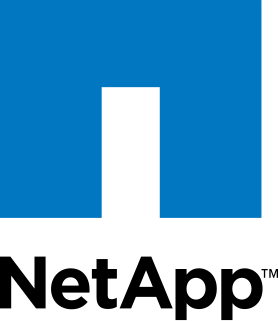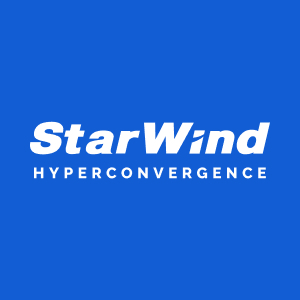In computing, a file server is a computer attached to a network that provides a location for shared disk access, i.e. storage of computer files that can be accessed by the workstations that are able to reach the computer that shares the access through a computer network. The term server highlights the role of the machine in the traditional client–server scheme, where the clients are the workstations using the storage. A file server does not normally perform computational tasks or run programs on behalf of its client workstations.

Network-attached storage (NAS) is a file-level computer data storage server connected to a computer network providing data access to a heterogeneous group of clients. NAS is specialized for serving files either by its hardware, software, or configuration. It is often manufactured as a computer appliance – a purpose-built specialized computer. NAS systems are networked appliances that contain one or more storage drives, often arranged into logical, redundant storage containers or RAID. Network-attached storage removes the responsibility of file serving from other servers on the network. They typically provide access to files using network file sharing protocols such as NFS, SMB, or AFP. From the mid-1990s, NAS devices began gaining popularity as a convenient method of sharing files among multiple computers. Potential benefits of dedicated network-attached storage, compared to general-purpose servers also serving files, include faster data access, easier administration, and simple configuration.
Quantum Corporation is a data storage and management company headquartered in San Jose, California. The company works with a network of distributors, VARs, DMRs, OEMs and other suppliers. From its founding in 1980 until 2001, it was also a major disk storage manufacturer, and was based in Milpitas, California. Quantum sold its hard disk drive business to Maxtor in 2001 and now focuses on integrated storage systems.

Iomega, was a producer of external, portable, and networked storage products. Established in the 1980s in Roy, Utah, United States, Iomega sold more than 410 million digital storage drives and disks, most notably the Zip drive floppy disk system. Formerly a public company, it was acquired by EMC Corporation in 2008, and subsequently by Lenovo, which rebranded the product line as LenovoEMC, until it was eventually discontinued in 2018.
TCP offload engine (TOE) is a technology used in network interface cards (NIC) to offload processing of the entire TCP/IP stack to the network controller. It is primarily used with high-speed network interfaces, such as gigabit Ethernet and 10 Gigabit Ethernet, where processing overhead of the network stack becomes significant.

NetApp, Inc. is an American hybrid cloud data services and data management company headquartered in Sunnyvale, California. It has ranked in the Fortune 500 since 2012. Founded in 1992 with an IPO in 1995, NetApp offers cloud data services for management of applications and data both online and physically.
Alacritech was a Silicon Valley company which marketed "intelligent" network interface controllers (NICs) to offload TCP/IP processing from the CPU of computer systems to dedicated hardware on the NIC: a concept now known as a TCP offload engine (TOE). Later it manufactured storage network products. Alacritech's main products were the ANX 1500 series of network throughput acceleration appliances.
A NetApp FAS is a computer storage product by NetApp running the ONTAP operating system; the terms ONTAP, AFF, ASA, FAS are often used as synonyms. "Filer" is also used as a synonym although this is not an official name. There are three types of FAS systems: Hybrid, All-Flash, and All SAN Array:
- NetApp proprietary custom-build hardware appliances with HDD or SSD drives called hybrid Fabric-Attached Storage
- NetApp proprietary custom-build hardware appliances with only SSD drives and optimized ONTAP for low latency called ALL-Flash FAS
- All SAN Array build on top of AFF platform, and provide only SAN-based data protocol connectivity.
Gluster Inc. was a software company that provided an open source platform for scale-out public and private cloud storage. The company was privately funded and headquartered in Sunnyvale, California, with an engineering center in Bangalore, India. Gluster was funded by Nexus Venture Partners and Index Ventures. Gluster was acquired by Red Hat on October 7, 2011.

Dell EMC Isilon is a scale out network-attached storage platform offered by Dell EMC for high-volume storage, backup and archiving of unstructured data. It provides a cluster-based storage array based on industry standard hardware, and is scalable to 50 petabytes in a single filesystem using its FreeBSD-derived OneFS file system.
Grid-oriented Storage (GOS) was a term used for data storage by a university project during the era when the term grid computing was popular.

Hitachi Data Systems (HDS) was a provider of modular mid-range and high-end computer data storage systems, software and services. Its operations are now a part of Hitachi Vantara.
Texas Memory Systems, Inc. (TMS) was an American corporation that designed and manufactured solid-state disks (SSDs) and digital signal processors (DSPs). TMS was founded in 1978 and that same year introduced their first solid-state drive, followed by their first digital signal processor. In 2000 they introduced the RamSan line of SSDs. Based in Houston, Texas, they supply these two product categories to large enterprise and government organizations.
NetVault is a set of data protection software developed and supported by Quest Software. NetVault Backup is a backup and recovery software product. It can be used to protect data and software applications in physical and virtual environments from one central management interface. It supports many servers, application platforms, and protocols such as UNIX, Linux, Microsoft Windows, VMware, Microsoft Hyper-V, Oracle, Sybase, Microsoft SQL Server, NDMP, Oracle ACSLS, IBM DAS/ACI, Microsoft Exchange Server, DB2, and Teradata.
Converged storage is a storage architecture that combines storage and computing resources into a single entity. This can result in the development of platforms for server centric, storage centric or hybrid workloads where applications and data come together to improve application performance and delivery. The combination of storage and compute differs to the traditional IT model in which computation and storage take place in separate or siloed computer equipment. The traditional model requires discrete provisioning changes, such as upgrades and planned migrations, in the face of server load changes, which are increasingly dynamic with virtualization, where converged storage increases the supply of resources along with new VM demands in parallel.

StarWind Software, Inc. is a privately held Beverly, Massachusetts-based computer software and hardware appliance company specializing in storage virtualization and software-defined storage.
Zadara is a cloud computing company founded in 2011, with headquarters in Irvine, California. The company develops computer software that it markets as storage-as-a-service, which can be used for cloud or on-premises servers, a model sometimes called private cloud.
Nasuni is a privately-held cloud storage company with headquarters in Boston, Massachusetts.
Veritas Technologies LLC. is an American international data management company headquartered in Santa Clara, California. The company has its origins in Tolerant Systems, founded in 1983 and later renamed Veritas Software. It specializes in storage management software including the first commercial journaling file system, VxFS, VxVM, VCS, the personal/small office backup software Backup Exec and the enterprise backup software, NetBackup. Veritas Record Now was an early CD recording software.
Thoth is a real-time, message passing operating system (OS) developed at the University of Waterloo in Waterloo, Ontario Canada.






